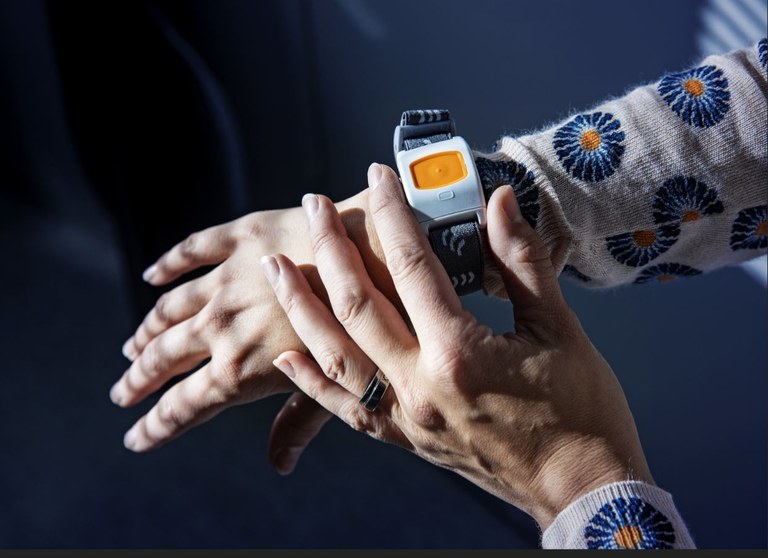Finland: More awareness around workplace threats to social workers
Female Finnish social and care workers run a higher risk of being the victims of violence and threats of violence. Social workers very often suffer verbal threats that sometimes turn into pure stalking. The authorities are now aware of the problem, but the road to safer workplaces is long.
“This room is a good example of a safe room from a social worker’s perspective,” says Hanna Holmberg, a senior social worker with the child protection agency in Vantaa in Southern Finland. She shows us around the social services office.
“What is good about this room is the three doors situated in different corners of the room.”
The doors allow social workers several exit opportunities if a client gets aggressive for instance. Another safety rule in this workplace is that the front door always remains locked. A locked door might have stopped the smoke grenade which was lobbed into another social services office in a medium large Finnish city in the early 2010s. We will get back to the smoke grenade later. First some figures.
According to a 2017 report from the Institute of Criminology and Legal Policy, more than one in ten women between 25 and 54 have been the victims of violence or the threat of violence between 2012 and 2016. Finnish research shows women face threats and violence in the workplace more often than men. The reason is that more women work in social and health care, where the risks of verbal and physical threats are high. The latest labour market barometer from 2018 shows that 44% of workers in female-dominated municipal workplaces have witnessed threats or violence at work.
Preventative thinking is alpha and omega
Hanna Holmberg continues the tour of the social agency office; it turns out that every room where social workers meet clients has at least one extra door.
“My office also has an extra door right behind where I am sitting.
“It is not at all the case that there always is a particular need to think about these safety aspects, but if we know in advance that there are reasons to believe the meetings could turn into dangerous situations, we social workers think extra carefully about where we choose to sit.”

Holmberg also explains how each room in the office has an alarm button which can be used if things turn dangerous. All social workers also carry an “alarm bracelet” when meeting clients. If the alarm is sounded, colleagues and two security guards from the ground floor will come to their aid.
Holmberg adds that not all social services offices in the city have the same level of security.
“Things are very different for home visits, when we need to consider more aspects and where we cannot rely on extra exits. That is why the first meetings with new clients always happen in the office – while we get to know new persons.”
Stalked for years
Not many speak openly about the aggressive behaviour shown by some clients towards social workers. And it is perhaps not surprising – social workers know very well that clients often are among the most vulnerable in society, and it is easy to consider their strong reactions as something that is “just” a part of the job. As Hanna Holmberg says: “Strong and challenging emotions are so common that it is easy to normalise them, you learn that you cannot take it personally.”

At the same time, Holmberg points out, there is zero tolerance of violence and attacks. But it is up to the individual social worker to judge when a situation feels threatening.
Which leads us to Marjo Oinonen. In the early 2010s she worked as a social worker in a medium-sized Finnish city. Soon after she had made a child protection decision, messages started flooding in from the father in the family, who was upset over the decision.
“To begin with I simply thought I was dealing with a challenging client. It took some months before I realised the seriousness of the situation: He was stalking me.”
In the beginning, Marjo Oinonen tried to handle the situation by applying her professional knowledge to explain the background to and reasons for the child protection decision.
“Little by little it became clear that I could not chance the man’s actions with my professional approach. When he started threatening me and contacting me through all imaginable channels, I realised that this was not normal.”
So she asked her closest supervisor for help and support to report the stalking to the police. Luckily the employer realised how serious the situation was, and after a while Oinonen also got help from occupational health.
The stalking ended after three long years – but Oinonen has used the case to write a thesis on social workers who are victims of stalking.
“The stories I have heard show the stalked workers must take the first difficult steps themselves and ask for help. That is hard, because you are completely paralysed. There is very little research around stalking in the workplace – the entire notion has been far too hidden in society.”
Oinonen’s advice is to react as quickly as possible
“If the stalking has been going on for two weeks, the case should be assessed and both occupations health, the employer and police should be involved at once.”
If you think back to your old place of work – did your employer maintain safety and consider the employees’ security?
“I have to say that the preventative bit in particular was not part of the picture – that you and your colleagues decide in advance which clients might pose a risk. This in spite of the fact that it was quite recent – the early 2010s – that I worked there. We also had no alarm system at work and the office front doors were not locked. And one day the man who was stalking me came to the office and lobbed a smoke grenade into my workplace!”
Authorities are aware of the problems
It has not escaped the authorities’ attention that social workers are particularly exposed to threats. The Ministry of Social Affairs and Health’s latest policy document on workplace protection focuses on “psychosocial stress” at work. It identifies the Social and health care sector as one of the trades that needs extra monitoring. The occupational safety administration in Southwestern Finland is responsible for an ongoing occupational safety programme. They have chosen to investigate private players in the Finnish social and health sector in particular.
“In later years we have seen increased awareness about the threat of violence as a real risk factor. Among the workplaces we have inspected so far, 60% have identified violence as a risk factor, and they have a plan for how they should act should problems arise. I think that is a high number.”
Among private social and health care employers investigated by the occupational safety administration, four in 10 still were still subject to criticism. The occupational safety administration’s task is to investigate and point out breaches, but it is the employer’s responsibility to do something about the breaches.
“They have been tasked with rectifying the larger or smaller breaches that we have found. They now must be able to show that they can identify any elevated risk factors and create a plan for how to reduce the risk in threatening situations.”
Marjo Oinonen wants to see broad and active efforts to inform employees about safety rules in workplaces.
“It is still too common for staff not to be aware of what the work safety guides say. There is so much more that needs doing when it comes to increasing awareness."
- An extra door for better safety
-
What might look like a peaceful situation can quickly turn into a threat in a social worker’s office. Having several doors allows the social worker to escape more easily from an aggressive client (above). Observe the alarm bracelet on the wrist!
 Follow us on Facebook
Follow us on Facebook
